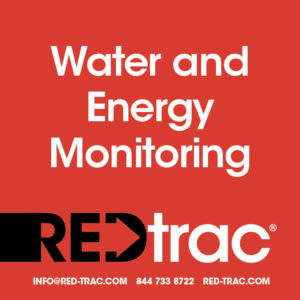The Semitropic Water Storage District board of directors held its Wednesday, April 13, 2022 on GoToMeetings and in person at its Wasco headquarters. GoToMeetings might be not be Zoom but it I so much better than Micro Soft Teams.
The Meeting
Chairman Dan Waterhouse called the meeting at the scheduled 12:30pm start time. We jumped right into the flag salute and then self-introductions. During public comment someone asked about the current situation with well permits. You may recall the most recent executive order from the gov spread confusion near and far over the well permitting process. General Manager Jason Gianquinto said that topic will be covered today.
There was no change to the agenda and the minutes were approved. Controller Bobby Salinas gave the financials and expenses and they were approved and paid.
Director and former Chair Rick Wegis has retired from the board. Today a familiar name and sometimes WaterWrights contributor Jon Reiter was sworn in to the Semitropic board. Good for him. He now has made a solemn vow to protect and defend the Constitution of the United States amongst other tasks, duties and obligations.
Wegis spoke saying he was honored to have served on the Semitropic board and is pleased to see the district is in good hands. The board and management thanked him for his service. Wegis isn’t retiring from work. He still has his kind, even handed influence on several other endeavors.
Getting Reiter sworn in was just in time because a draft of the election roll was presented to the board and a notice of a hearing was approved. Keep in mind in an irrigation district each registered voter living in the district gets one vote. In a water district each landowner gets one vote per acre. The vote can be weighted according to the level of service provided for that acre. Not all directors live in a water district or are even landowners. A landowner can nominate a proxy and have an employee or relative or trusted association serve on the board.
Task Orders
A representative from the Kern County Water Agency was going to address the board about the Delta Conveyance project also referred to as the tunnel and the current so called Voluntary Agreement. But that person wasn’t able to attend today so those two items were tabled.
SWSD engineer Isela Medina presented the board a budget augmentation for two GEI Engineering task orders. One to help out dealing with High On Speed Rail and one to prepare a grant application for the US Bureau of Reclamation’s drought resiliency program. Medina sounded pretty confident on Semitropic getting an award. Good for her.
Next Salinas spoke about financing the Leonard Project and the board went along with approving that item. I believe this is a recharge project and Reiter made the motion. A slice of history. There was also a resolution passed to delay fixing some charges on two projects until next month. Wasn’t really sure what that was all about.
SGMA
Gianquinto took the floor as the Semitropic GSA meeting began. The first topic was the Executive Order issued by Governor Gavin Newsom late last month. Waterhouse said that order was widely construed to be a moratorium on well drilling. The order requires the permitting authority to submit all well permits to the overlaying GSA for evaluation. Kern County issues well permits. I’ve heard Kern County is upholding its longstanding SGMA leadership standards by washing its hands and shoving the whole shebang back to the Kern Groundwater Authority. In the middle of this discussion there was someone online who managed to broadcast his phone call into the meeting and this time it wasn’t me. Gianquinto went on to say Patty Poire at Kern Groundwater Authority is working on this and he said Kern and other Valley counties are working with the governor’s office to find clarity and he hopes that goal will be attained by the end of the month.
Executive Order issued by Governor Gavin Newsom late last month. Waterhouse said that order was widely construed to be a moratorium on well drilling. The order requires the permitting authority to submit all well permits to the overlaying GSA for evaluation. Kern County issues well permits. I’ve heard Kern County is upholding its longstanding SGMA leadership standards by washing its hands and shoving the whole shebang back to the Kern Groundwater Authority. In the middle of this discussion there was someone online who managed to broadcast his phone call into the meeting and this time it wasn’t me. Gianquinto went on to say Patty Poire at Kern Groundwater Authority is working on this and he said Kern and other Valley counties are working with the governor’s office to find clarity and he hopes that goal will be attained by the end of the month.
The KGA is the overarching GSA and SGMA contact point of which the Semitropic GSA is a member. Each of the members must agree to a uniform exceedance policy. Each GSA must take responsibility for its amount of overdraft in the subbasin. Not all GSAs are pumping overdraft in equal amounts. Coming to an agreement of who is responsible for how much isn’t an easy process. Once those amounts are determined and accepted a policy must be put in place for dealing with the over pumping. Gianquinto asked the board to approve a draft document that deals with these matters. The overall exceedance policy will be voted on at the KGA.
Over-pumping is caused by a lack of surface supplies which are caused largely by government regulatory action. One of the problems of over-pumping is subsidence. In the aquifer there can be clay layers. If too much water is pumped this clay can collapse on itself and cause the land elevation to drop. Gianquinto said there are maps prepared by GEI that helps show where and why subsidence is occurring in the Kern Subbasin. He said the KGA member managers will review the maps which will help avoid creating or exacerbating the subsidence conditions.
Within Semitropic there are beneficial users: domestic and small communities, agricultural users and environmental users. There are wildlife refuges that qualify as environmental. A census of Semitropic wells by type of use and their vulnerability to hitting minimum thresholds under SGMA has been conducted.
Next Gianquinto showed the board an analysis of the three management areas within Semitropic and the varying need to mitigate for wells. GEI proposed a tiered rate structure and has fleshed out what a mitigation plan would look like. He said Tier Zero would be a nominal $5 per a/f charge for consumptive use. Tier One charges would be $321 a/f for exceeding the measurable objectives. It gets a bit complicated when each management area’s water levels are factored in. The groundwater levels in the southern portion of the district closest to the Kern River are higher and reduce the further north one goes. There are four tiers but they start with Tier Zero so Tiers Two and Three are the ones with the highest rates maxes out at $1,678 per a/f fee or charge or penalty or whatever the legal term is.
exceeding the measurable objectives. It gets a bit complicated when each management area’s water levels are factored in. The groundwater levels in the southern portion of the district closest to the Kern River are higher and reduce the further north one goes. There are four tiers but they start with Tier Zero so Tiers Two and Three are the ones with the highest rates maxes out at $1,678 per a/f fee or charge or penalty or whatever the legal term is.
It sounds like this will have to go to the voters, maybe a Prop 218 election. I’m not sure which director expressed the thought out loud but someone did – “You want to ask people to vote for this?” Gianquinto said this isn’t an easy ask but it will prevent other fee structures from imposing a lot of increases in a big hurry. Someone else asked about the white areas just north of Semitropic and the possible drift of groundwater from the district into that part of the Valley. What could happen? Worst case scenario is the State Water Out of Control Board steps in and manages the white area. This is an informational item meant to help update the Kern Subbasin GSP with DWR. Gianquinto said DWR’s comments on the KGA GSP included the terms Byzantine and fragmented. He said much of the can be corrected with updating the appendix and such. He said cleaning up Semitropic’s management area plan will be a help in closing in on a positive result. They need to get this update to the KGA soon as there is a July deadline.
Consultant Reports
The first report is always announced as being brief – sometimes it is and sometimes it isn’t. The WM Lyles report always contains detail. GEI’s report was given by Larry Rodriguez who said there wasn’t anything unusual this past month. The SGMA matters are kind of business as usual. His firm is ready to work up a 218 election. He expects to be able to give a groundwater modeling update next month.
Balance PR, the firm of former state senator Dean Florez advises Semitropic on legislative and political matters. In response to one of my earlier questions he said he doesn’t know who actually writes the governor’s executive orders. He gave the board a review of legislation, like AB 2201 which has been an elusive prey. I think that’s the bill to codify the executive order in to law. Hopefully it will be written with much clearer language than the order.
to law. Hopefully it will be written with much clearer language than the order.
Florez said the mood in Sacramento is if ag wants more water it better pay for it. He said it is difficult to explain to folks with their minds made up that ag already pays for water but it isn’t getting it. He said the Assembly is even worse than the state senate. He said expect to see more of the Gov during the wildfire and drought season. He said Newsom would like to get into the ag area of the state. But who knows how that conversation will go?
Senator Steven Bradford from Southern California would also like to tour the area. Florez gave a good review of the efforts in dealing with current conditions from DWR and Secretary of Natural Resources Wade Crowfoot as well. The California State Association of Counties is getting involved with the executive order as most well permits come from counties. There is also some discussion about relaxing CEQA under the Exec Order but Florez said he doesn’t see much traction in this area unless you’re building a giant sports stadium in a major urban area.
Greg Allen is Vice President of RED Trac. He has been working with the district to develop a remote data gathering system based on energy. He was sorry to report he can’t keep up on the bad news theme. He said the necessary equipment is on its way and he sees the construction starting by June if I understood. He said there is hardly any hold outs left and meters are being calibrated.
GM Report
Gianquinto said the State Water Project decreased from 15 percent to five percent last month. He said it was unusual since DWR came out with this announcement a little early. There could be a seven percent bump but he won’t be holding his breath. He also said WM Lyles has been doing a good job.
Gianquinto asked the board to weigh in on how to handle the requests for 60,000 yards of fill dirt. There was a project digging recharge cells that yielded dirt Semitropic clients could use but that supply is all out. There is a need to deepen some cells by six to eight feet. The landowner making the request would be responsible to not leave any soil compaction and watch out for powerlines and such. The board approved. And that was that for open session at 2:26pm.
DISCLAIMER OF RESPONSIBILITY; Waterwrights strives to provide its clients with the most complete, up-to-date, and accurate information available. Nevertheless, Waterwrights does not serve as a guarantor of the accuracy or completeness of the information provided, and specifically disclaims any and all responsibility for information that is not accurate, up-to-date, or complete. Waterwrights’ clients therefore rely on the accuracy, completeness and timeliness of information from Waterwrights entirely at their own risk. The opinions expressed in this report are those of the author and do not represent any advertisers or third parties.
ALL RIGHTS RESERVED. Copyright 2022 by Waterwrights/Don A. Wright.
SEMITROPIC WATER STORAGE DISTRICT
1101 Central Avenue, Wasco, CA 93280-0877 • 661-758-5113 • mail@semitropic.com
Board: Dan Waterhouse – President, Rick Wegis – Vice President, Tom Toretta – Treasurer, Todd Tracy – Secretary, Philip W. Portwood, Jeff Fabbri, Tim Thomson
Staff: Jason Gianquinto-General Manager, Bobby Salinas–District Controller, Isela Medina–District Engineer, Executive Secretary-Marsha Payne, Consultant-Will Boschman, Superintendent-John Lynch & Attorney
About: Semitropic Water Storage District is one of eight water storage districts in California and is the largest in Kern County. The District delivers water to nearly 300 customers for the irrigation of approximately 140,000 acres for agricultural uses. Semitropic also supplies energy to a variety of users and provides groundwater banking and storage services. Established in 1958, Semitropic Water Storage District covers an area of more than 220,000 acres. It began as an irrigation district for the purpose of securing State Water Project supplies to reduce groundwater overdraft. From www.semitropic.com
































